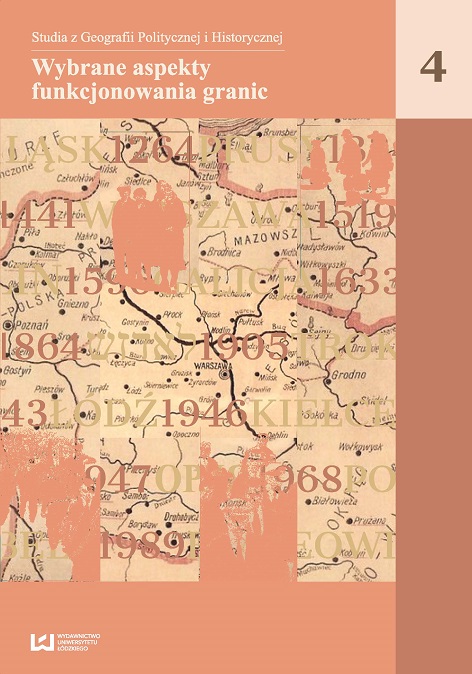Granica miękka jak skała
Border soft as a rock
Author(s): Ryszard ŻelichowskiSubject(s): Politics / Political Sciences, Politics, Geography, Regional studies, International relations/trade
Published by: Wydawnictwo Uniwersytetu Łódzkiego
Keywords: granice; przesmyk; lotnisko; wody terytorialne; Gibraltar; Hiszpania; Zjednoczone Królestwo; border; Rock; isthmus; airport; territorial waters; Spain; United Kingdom
Summary/Abstract: Spór o przebieg granicy lądowej, morskiej i powietrznej pomiędzy Gibraltarem i Hiszpanią sięga hiszpańskiej wojny sukcesyjnej i traktatu zawartego w Utrechcie w 1713 r. Choć w jego wyniku Gibraltar został przekazany Wielkiej Brytanii, Hiszpania nigdy nie pogodziła się z jego utratą. Brak dokładnego opisu tego, co właściwie zostało przekazane Wielkiej Brytanii w traktacie z Utrechtu oraz określenia granic wód terytorialnych jest przyczyną długotrwałego sporu pomiędzy tymi dwoma państwami. Z upływem czasu poszerzył się on o kształt drogi powietrznej dla lotnictwa wojskowego i cywilnego, łączącej Gibraltar z pozostałymi państwami Europy. Artykuł omawia skutki traktatu dla obecnych stosunków pomiędzy Gibraltarem, Hiszpanią i Wielką Brytanią.Although fierce border disputes in “Old Europe” belong to the past, there are places where emotions are still riding high. These include the border between Gibraltar and Spain. Lack of a final settlement of the border arises from an inability to reach agreement on several fundamental issues. Their source lies in a document which was signed at Utrecht in 1713, which ended the War of the Spanish Succession. The content of the tenth article of the Treaty of Utrecht marked with Roman „X” causes a juridical headache and keeps busy the most outstanding lawyers and historians of Great Britain and Spain. The documents states that “The Catholic King [Philip V] does hereby, for Himself, His heirs and successors yield to Crown of Great Britain the full and entire propriety of the town and castle of Gibraltar, together with the port, fortifications, and forts thereunto belonging; and He gives up the said propriety to be held and enjoyed absolutely with all manner of right forever”. In addition, the last sentence of article X concludes that in case “it shall hereafter seem meet to the Crown of Great Britain to grant, sell, or by any means to alienate there from the propriety of the said town of Gibraltar, it is hereby agreed and concluded, that the preference of having the same shall always be given to the Crown of Spain before any others”. The reason for this state of affairs is the lack of an accurate description of what actually had been transferred to Britain in the Treaty of Utrecht, because this treaty does not contain maps or a detailed inventory of the territory to be acquired by it. The exact course of the border of Spanish-English is not specified neither in the Treaty of 1713 nor has been marked on the ground at a later date. From that year the two state administrations have been discussing the border that runs between Gibraltar and Spain on disputed territory of the isthmus, conventionally referred to as “neutral territory”. Article X of the Treaty of Utrecht did not specify also the extent of the territorial waters. When the British took over Gibraltar there was not specified either the size of the port, nor the range of the waters for mooring and waterway access to the fortress was not described. In this case the territorial waters of Gibraltar for the English meant the area within the range of artillery fire, which then was then about three-miles, in practice most of the Bay of Gibraltar. During the Second World War the British government ordered expansion of the airport on land fill, in the direction of Gibraltar Bay, which Spain considers its territorial waters. This resulted in yet another discussion on the sovereignty of that territory, as well as the conduct of air routes for military and civil aviation. In her testament Isabella of Castille wrote: “I ask and require of the Kings, my successors, that they may hold and retain the said City [of Gibraltar] for themselves and their own possession; and that no alienation of it, nor any part of it, nor in jurisdiction, civil or criminal, shall ever be made from the Crown of Castille”. This explains to a large extent why Gibraltar became “a sacred thing”, which has been anchored so much in the consciousness of the Spaniards that no politician has had the strength or courage to question the will of the monarch, despite the passage of time. However, one should not forget the fact that Gibraltar is an overseas territory of the United Kingdom of Great Britain and Ireland, according to the UN Agency for decolonization, and is still a dependent territory administered by a foreign power. Today, with all new military technology, Gibraltar has lost its military importance. After accession of Spain and United Kingdom to the NATO and the EEC, the dispute about the territory is mainly about prestige. The population of Gibraltar, however, seeks for itself the right of self-determination and right to decide its own fate.
Journal: Studia z Geografii Politycznej i Historycznej
- Issue Year: 2015
- Issue No: 04
- Page Range: 141-168
- Page Count: 28
- Language: Polish

